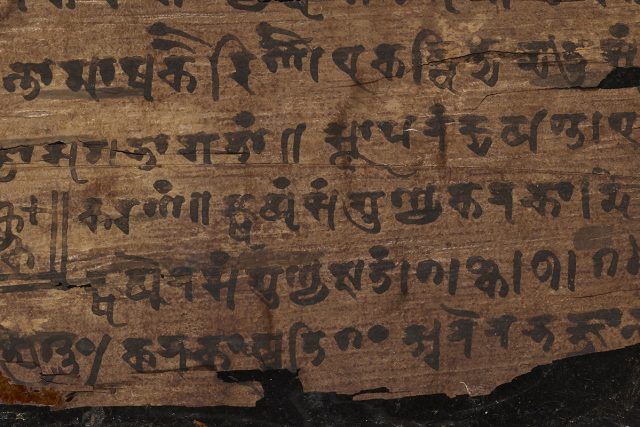
By: Ajuli Tulsyan
As we leaf through the pages of history we realise that the symbol ‘0’ was known to have been discovered in and around the ninth century. But a breakthrough has been reported wherein ‘0’ is now pushed back 500 years. Interestingly a manuscript with the Oxford University has been carbon dated back to the 3rd or 4th century AD; precisely between 224 AD and 383 AD. This obviously has generated a lot of excitement as it is now being considered as the first usage of zero as a digit in Mathematics.
Research reveals that the numbers appear in an ancient Indian text called the Bakhshali manuscript. This comprises 70 leaves of birch bark, filled with mathematics and text in the form of Sanskrit. Marcus du Sautoy from the University of Oxford further shares, “It seems to be a training manual for Buddhist monks.”
First discovered by a local farmer in 1881, the manuscript was named after the village of its discovery, in what is now Pakistan. Since 1902 it has been housed by the University of Oxford’s Bodleian library.
This further indicates that the manuscript predates a 9th century inscription of zero on the wall of a temple in Gwalior, India, which was previously considered to be the oldest recorded example of a zero.
On the wall runs the text which has hundreds of zeros denoted using a dot. The number ‘0’ later evolved from the dot with a hole in the middle that we know today as the ‘0’. It is fascinating to know that this dot was originally used as a placeholder, similar to the usage of “0” in the number 505; indicating there are no tens. At that time ‘0’ hadn’t yet started enjoying the status of being a number.
Although zero as a placeholder has been used in varied ancient cultures like the Mayans and Babylonians, it was only the Indian dot that enjoyed the number status, first described in 628 AD by the Indian astronomer and mathematician Brahmagupta.
According to Marcus, “Some of these ideas that we take for granted had to be dreamt up. Numbers were there to count things, so if there is nothing there why would you need a number?” Initially the concept of zero was banned but eventually it was allowed for the development of calculus, and corroborates the digital age.
With 500 years between the oldest and youngest pages it is tricky to state the exact date and du Sautoy reckons that there’s still some mystery about how all these leaves got collected together.
Must say that the omnipresent ‘0’ has quite a sketchy origin!














